
Gootkit is complex multi-stage banking malware that was discovered for the first time by Doctor Web in 2014. Initially it was distributed via spam and exploits kits such as Spelevo and RIG. In conjunction with spam campaigns, the adversaries later switched to compromised websites where the visitors are tricked into downloading the malware.
Gootkit is capable of stealing data from the browser, performing man-in-the-browser attacks, keylogging, taking screenshots and lots of other malicious actions. Its loader performs various virtual machine and sandbox checks and uses sophisticated persistence algorithms. In 2019, Gootkit stopped operating after it experienced a data leak, but has been active again since November 2020.
Gootkit’s victims are mainly located in EU countries such as Germany and Italy. In this article we analyze a recent sample of Gootkit.
Technical Details
Gootkit consists of a (down)loader component written in C++ and the main body written in JS and interpreted by Node.js. The main body is a modular framework, containing registration, spyware, VMX detection and other modules.
Loader
The sample (MD5 97713132e4ea03422d3915bab1c42074) is packed by a custom-made multi-stage packer which decrypts the final payload step by step. The last stage is a shellcode that decrypts the original loader executable and maps it into memory. After mapping, the original entry point is called. Hence, we can easily unpack the original executable and analyze it. We detect the Gootkit loader with the verdicts listed in the table below.
| MD5 | SHA-1 | Verdict |
| 97713132e4ea03422d3915bab1c42074 | a90c6e7c5650e73ceb0b329fa8c78045632100ee | Trojan-Downloader.Win32.Injecter |
| 27626f2c3667fab9e103f32e2af11e84 | 6e9e30c699c7111089fe364ce47f1dc05c8bc703 | HEUR:Trojan.Win32.Generic |
Most of the strings are encrypted using XOR encryption and are decrypted at runtime. No other techniques are used to complicate static analysis.
String decryption
However, to make dynamic analysis more difficult, the Gootkit loader employs lots of different methods to detect virtual environments or debuggers. If any of the virtual machine checks succeed, the loader enters an infinite loop.
Sample name check
Full list of VM detection techniques used by the malware:
| Check | Prohibited value |
| CRC32 of sample name | 0xBC136B46, 0xD84A20AC, 0xEED889C4, 0x58636143, 0xC0F26006, 0x8606BEDD, 0xE8CBAB78, 0x2AB6E04A, 0x31E6D1EA |
| GetModuleHandle | dbghelp.dll, sbiedll.dll |
| GetUserName | CurrentUser, Sandbox |
| GetComputerName | SANDBOX, 7SILVIA |
| HKEY_LOCAL_MACHINE\HARDWARE\DESCRIPTION\SystemBiosVersion | FTNT1, INTEL-604000, SMCI, QEMU, VBOX, BOCHS, AMI, SONI |
| HKEY_LOCAL_MACHINE\HARDWARE\DESCRIPTION\VideoBiosVersion | VirtualBox |
| HKEY_LOCAL_MACHINE\Software\Microsoft\Windows\CurrentVersion\SystemBiosVersion | 55274-640-2673064-23950 (Joe Sandbox), 76487-644-3177037-23510 (CWSandbox), 76487-337-8429955-22614 (Anubis Sandbox) |
| HKEY_LOCAL_MACHINE\HARDWARE\DESCRIPTION\System\CentralProcess\0\ProcessorNameString | Xeon |
| _MEMORYSTATUSEX. ullTotalPhys | Less than 2100000000 |
| UuidCreateSequential (this function is based on computer MAC address so return value is used to determine whether trojan is running in sandbox or not) | 0xF01FAF00 (Dell Inc.), 0x505600 (VMWare, Inc.), 0x8002700 (PCS System Technology GmbH), 0xC2900 VMWare, Inc.), 0x56900 (VMWare, Inc.), 0x3FF00 (Microsoft), 0x1C4200 (Parallels), 0x163E00 (XenSource) |
| CRC32 of running process names | 0xAEA3ED09, 0x2993125A, 0x3D75A3FF, 0x662D9D39,
0x922DF04, 0xC84F40F0, 0xDCFC6E80 |
Execution flow
When the sample starts, it checks the command line arguments. The available arguments are listed below:
| Argument | Description |
| –client | no handler |
| –server | no handler |
| –reinstall | iterate over running processes (where process is a loop variable) and kill all processes where process.pid is not equal to current process PID and process.name equals current filename. After that, copy self and run via CreateProcessW |
| –service | set environment variable USERNAME_REQUIRED=TRUE |
| –test | stop execution |
| –vwxyz | download main body from C&C |
After the command line arguments are handled, the sample checks if it’s running inside a virtual machine or being debugged. If not, it decrypts the configuration and starts four threads.
Thread start routine
- Update_from_c2
The first thread that is started tries to download a loader update from <CnC host>/rpersist4/<crc>, where <CnC host> is a command-and-control server address and <crc> is the CRC32 of the first 0x200 bytes of the current file in decimal format. - Browser_inj
The thread decrypts two embedded MZPE executables (x64 and x86 DLLs), iterates over the running processes and tries to inject the decrypted DLLs into the process memory of the designated process using the NtCreateSection/NtMapViewOfSection API. Matching of the process name is done by calculating the CRC32 value of the process name. For a list of supported browsers, see the table below.CRC32 Browser name 0xC84F40F0 Chrome 0x662D9D39 Firefox 0x922DF04 Internet Explorer 0x2993125A Microsoft Edge (MicrosoftEdgeCP.exe) 0x3D75A3FF Opera 0xDCFC6E80 Safari 0xEB71057E unknown The injected code is called from the main body web injection and traffic sniffing routines to perform a man-in-the-browser attack. To do so, the code patches standard browser functions responsible for certificate validation to allow self-signed certificates. As a result, attackers are able to inject custom JS code and modify or redirect traffic.
- Persistence_service
If a sample is running under LOCAL_SYSTEM account, the Gootkit persistence mechanism abuses the pending GPO Windows feature. When a user modifies Pending GPO registry values, he/she has to specify the following parameters:- count – count of pending GPOs;
- path1, path2, … – path to the special .inf file that contains instructions on how to load GPO;
- Section1, Section2, … – name of the section from the INF file.
So Gootkit creates an .inf file in the same directory as the sample and writes the following values to the Software\Microsoft\IEAK\GroupPolicy\PendingGPOs registry key:
- count – 0x1
- path1 – .inf file location
- Section1 – DefaultInstall
INF file content
Now explorer.exe will load the Group Policy Objects (GPO) whenever it is loaded. Gootkit creates a pending GPO for the Internet Explorer Administration Kit (IEAK), which points directly at the INF file. When explorer.exe is loaded at runtime, it will execute the [DefaultInstall] inside the created file, which will run the Gootkit executable.
If the sample is running under another account, it creates a service with a random name chosen from %SystemRoot%, copies itself into the %SystemRoot% folder with the chosen name and deletes itself from the disk.
- Stop_switch
The thread looks for a file named uqjckeguhl.tmp in the \AppData\Local\Temp and \Local Settings\Temp folders. When the file is found, the malware will stop.
Main body download
Before downloading the main body from the C&C, the loader tries to find registry keys with the following format: HKCU\Software\AppDataLow\<pr_string>_<i>, where i is a number starting from 0 and pr_string is a pseudo-random string generated when the bot starts. Generation is based on the victim’s PC parameters, so the same value is generated for the same PC each time.
Each key contains a maximum chunk of 512,000 bytes (500KB) of encrypted data. If the aforementioned keys were found, their contents will be saved in a newly allocated buffer (used for decryption and decompression). The buffer is then decrypted using the same function used for decrypting the configuration, after which the buffer is decompressed.
After the unpacking routine, the loader will download the main body from the C&C, calculate its CRC32 and compare it with the registry payload CRC (if one exists). If the CRCs are different, the loader will execute the newer version downloaded from the C&C. The C&C server will not send the DLL module without the appropriate UserAgent header that is hardcoded into the sample. The current hardcoded value is: Mozilla/5.0 (Windows NT 6.1; Win64; x64; rv:25.0) Gecko/21006101 Firefox/25.0.
Decrypt function
Main body
The main body (MD5 20279d99ee402186d1e3a16d6ab9398a, verdict HEUR:Trojan.Win32.Generic) is a Node.js interpreter with bundled encrypted JS files. On startup, the main body decrypts the JavaScript files using an RC4-like algorithm with hardcoded keystream.
Information about the embedded modules is stored in an array of special file structures that have the following format: BYTE* name_pointer, BYTE* encrypted_data, DWORD data_size, DWORD encr_flag. These structures are used within the decryption routine that reads data_size bytes starting from encrypted_data. This routine decrypts encrypted_data if encr_flag is set and writes the result into a file with name *name_pointer. The decryption routine iterates over all entries in the file information array. Then the decryption execution is transferred to the Node.js interpreter.
File information array
The array contains 124 encrypted files, both Node.js system libraries and open-source packages, and malware modules. Strangely enough, the JS entry point is a file named malware.js.
Malware.js initializes global bot variables, collects saved cookies (IE, Firefox, Chromium) and iterates over a list of servers to find an available C&C.
When the malware finds a C&C server, it launches an infinite loop that listens to different internal malware events (some routines like cookie collection start without C&C request upon bot startup) and sends the collected data to the C&C via special formatted packets. The malware also listens to the C&C commands and invokes the appropriate handler on each command. To communicate with the modules, the malware uses following packet types:
| Internal name | Description |
| SLAVE_PACKET_API_TAKESCREEN | Send screenshot to C&C |
| SLAVE_PACKET_MAIL | Send received email info |
| SLAVE_PACKET_LOGLINE | Send log |
| SLAVE_PACKET_LSAAUTH | Send authentication credentials |
| SLAVE_PACKET_PAGE_FRAGMENT | Send web injects data |
| SLAVE_PACKET_FORM | Send grabbed form data |
| SLAVE_PACKET_LOCAL_VARS | Send local bot variables |
| SLAVE_PACKET_SECDEVICELOG | Send secure device event log |
| SLAVE_PACKET_KEYLOG | Send keylogger data |
| SLAVE_PACKET_WINSPYLOG | Send current active window |
There are six types of internal event handlers and corresponding packet formats.
Event handlers
The general packet structure is as follows:
- Length + 8 (4 bytes)
- Packet magic (0xEDB88320 XOR length+8)
- Packet data (different for each package type, serialized using protobuf)
- Packet magic
Packet generation routine
Kaspersky products detect this family as Trojan-Downloader.Win32.Injecter, HEUR:Trojan.Win32.Generic, Trojan-Downloader.Win32.Gootkit, Trojan-Banker.Win32.Gootkit. All the details, IoCs, MITRE ATT&CK Framework data, Yara rules and hashes related to this threat are available to the users of our Financial Threat Intelligence services. To learn more about threat hunting and malware analysis, check out expert training by Kaspersky’s GReAT.
Indicators of compromise
Main body (same since 2019)
20279d99ee402186d1e3a16d6ab9398
Loader
5249c568fb2746786504b049bbd5d9c8
97713132e4ea03422d3915bab1c42074
174A0FED20987D1E2ED5DB9B1019E49B
27626f2c3667fab9e103f32e2af11e84
Domains and IPs
kvaladrigrosdrom[.]top
scellapreambulus[.]top
lbegardingstorque[.]com
kerymarynicegross[.]top
pillygreamstronh[.]com

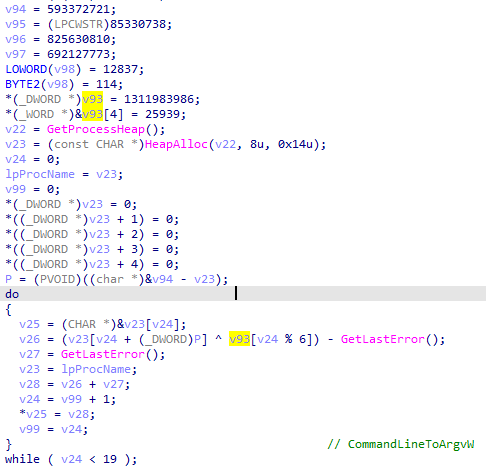
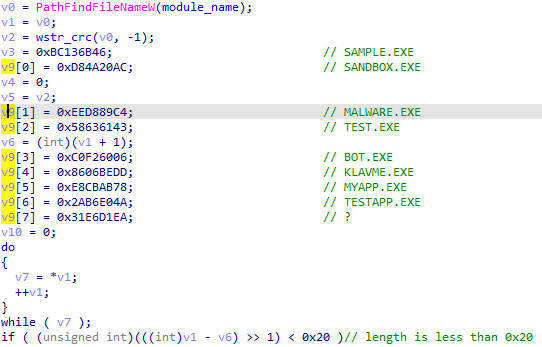


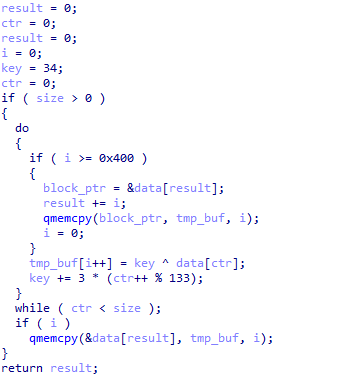
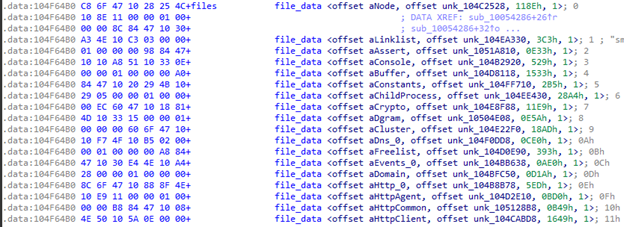
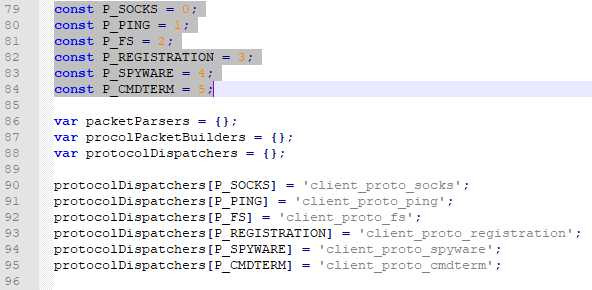
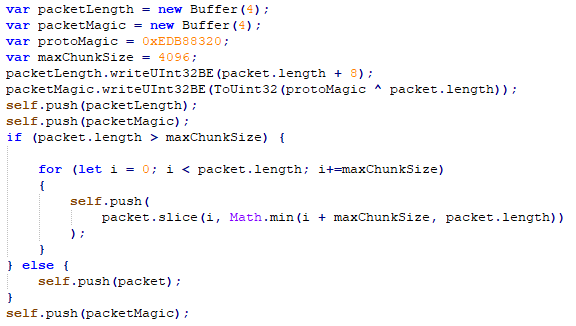





















Gootkit: the cautious Trojan